WBBSE 9th Class Science Solutions Life Science & Environment Chapter – 3 Physiological Processes of Life
WBBSE 9th Class Science Solutions Life Science & Environment Chapter – 3 Physiological Processes of Life
West Bengal Board 9th Class Science Solutions Life Science & Environment Chapter – 3 Physiological Processes of Life
WBBSE 9th Class Life Science & Environment Solutions
TOPIC – 1
PLANT PHYSIOLOGY
SUB-TOPIC – 1.1
PHOTOSYNTHESIS
SUMMARY
- Plant physiology is a field of botany, that deals with the physiological functioning of plants. Several fundamental processes such as, photosynthesis, mineral nutrition, transpiration, transportation etc. are included within plant physiology.
- Mode of nutrition in higher green plants is autotrophic and plants meet this need of nutrition by the process of photosynthesis.
- The term photosynthesis was introduced by Charles Barnes in the year 1893. The word ‘photosynthesis’ is derived from the Greek word ‘photos means light and ‘synthesis means building up.
- Mesophyll tissue in the leaf is the site for photosynthesis. Other green parts of plants which contain chlorophyll are also capable of performimg photosynthesis.
- Basic components necessary for photosynthesis are CO2, water, sunlight and photosynthetic pigments. Chlorophyll molecules and the other accessory pigments, like-carotenes and xanthophylls, absorb light energy and then transfer it to the reaction centre. ADP, NADP and RuBP are some organic substances which play important role in photosynthesis.
- The whole process of photosynthesis involves two distinct phases, viz., light-dependent reaction or simply light reaction (photochemical phase) and light-independent reaction or simply dark reaction (biosynthetic phase).
- Chlorophyll gets energised after getting hit by photon particles of sunlight. This chlorophyll now helps in dissociation of water. Carbon atom of CO2 is assimilated within the cell as organic compounds.
- Glucose is the end product of photosynthesis. It is synthesised in cytosol of mesophyll cells.
- Trapping and transformation of solar energy, synthesis of food for the entire living world and maintaining balance between O2 and CO2 in environment are the significances of photosynthesis.
Long Answer Type Questions
| Features | Source | Function |
| 1. CO2 (Carbon dioxide) | Terrestrial plants absorb CO2 from the air by stomata; aquatic plants absorb CO2 remain dissolved in water | Is reduced to form glucose which acts as building blocks for other organic molecules |
| 2. H2O (Water) | Terrestrial plants absorb H2O from the soil by the roots; aquatic plants absorb it directly from the surroundings | Water molecule splits (photolysis) into H+ and OH-ion by activated chlorophyll; from OHions, oxygen is formed and is liberated out |
| 3. Light | Plants obtain from the sun in the form of photon particles | Sunlight supplies solar energy to initiate the process of photosynthesis by activating chlorophyll molecules |
| 4. Chlorophyll | Found in the discs of thylakoids of grana present in chloroplasts of mesophyll tissues of leaves | Capture the photon or quantum of solar energy and converts it to chemical energy; activated chlorophyll (Chl*) hydrolyses water into H+ and OH– ions and thereby helps in the formation of H2O and O2 |
- Trapping and transformation of solar energy: Solar energy from the sun is trapped by chlorophyll and transformed into chemical potential energy in the glucose molecule. This energy is then passed on from the producers (plants) to the consumers through food chain and is liberated during respiration.
- Source of food: Through the process of photosynthesis, inorganic materials like water and CO2 combine to produce organic molecule glucose, which is the basic component of all food matters on earth. Not only plants, but other animals also obtain this food, either directly or indirectly, to survive.
- 3 Maintainance of 02 and CO2 balance in the environment: During respiration, all living organisms release CO2 and absorb O2. On the other hand, green plants release O2 and absorb CO2 during photosynthesis. Thus, photosynthesis in combination with respiration, helps to maintain the balance between O2 and CO2 in the environment.
- Source of fuel: Due to natural disasters, like earthquake, plants get trapped under the soil and in due course of time get converted into coal and mineral oils. The energy obtained from these coal and mineral oils, originally is the solar energy which was entrapped by the plants in the past. This . is how photosynthesis is the only source of different types of fuel.
- Source of human welfare: We get different types of important materials from plants, like food, wood, paper, cloth, rubber, gum, paint, etc. Apart from these, we get different alkaloids like morphine, quinine, reserpine, etc. and various medicines from plants. Therefore, plants, more specifically photosynthesis, is very important physiological process for human welfare.
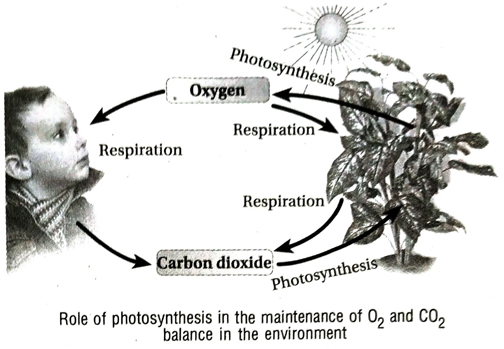
Short Answer Type Questions
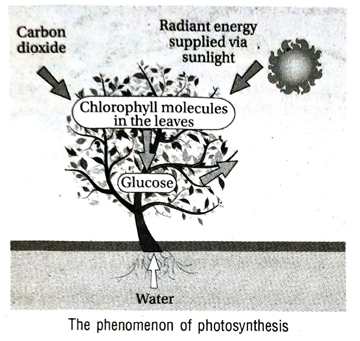

Very Short Answer Type Questions
Multiple Choice Questions & Answers [MCQ]
Answer in a single word or sentence
Fill in the blanks
State True or False
SUB-TOPIC – 1.2
MINERAL NUTRITION
SUMMARY
- The inorganic materials obtained mainly from soil that are used as raw materials by plants are called mineral nutrients. Plant collect a large quantity of mineral nutrients from three different sources, viz., soil, water and atmosphere. However, only 20 elements are essential for normal plant growth and metabolism. The process of nutrition by which mineral nutrients are absorbed from environment, are distributed and are used in metabolic activities of plant, is called as mineral nutrition.
- The mineral elements those act as important structural and physical components are known as essential elements, eg.-N, P, K, Ca, Mg, S, etc.
- Macroelements are required in large quantities, whereas, microelements are required in less. ny amount for proper growth, development, structure aand metabolic activities of plant.
- Inadequate supply of any one of the essential elements leads to deficiency symptoms in plant bodies which may even lead to plant death.
- Mineral nutrients help in synthesis of enzymes (as cofactor), act as electron carrier for redox reaction. Moreover, these elements maintain water balance in plants, help in chlorophyll synthesis and control buffer action.
Long Answer Type Questions
- Carbon (C): [A] It is the basic constituent of protoplasm. [B] It plays the role of chief component for the synthesis of carbohydrate, protein, fat, enzymes, vitamins, etc.
- Hydrogen (H): [A] It is the basic constituent of protoplasm. [B] It is needed for the synthesis of carbohydrate, protein and fat.
- Oxygen (0): [A] It helps in the synthesis and oxidation of food. [B] It is needed for normal functioning metabolic activities. [C] It is needed for the synthesis of carbohydrate, protein and fat.
- Nitrogen (N): [A] It is the chief ingredient of protein. [B] It helps in building cellular structure, proper growth and development of body. [C] It is needed for the synthesis of chlorophyll.
- Phosphorus (P): [A] It plays an important role in protein synthesis. [B] It acts as a component of ATP, NADP and membrane of cells and other organelles. [C] It prevents premature shedding of leaves, blackening of fruits and leaves.
- Sulphur (S): [A] It is the major constituent of certain amino acids, vitamins and co-enzyme A. [B] It helps in the formation of chlorophyll and development of roots. [C] It also prevents hardening of stems and plays important role in growth and metabolism.
- Potassium (K): [A] It takes part in protein and carbohydrate synthesis, [B] It acts as co-enzyme and helps in the stomatal movement. [C] Potassium maintains normal growth and colour of leaves.
- Calcium (Ca): [A] It helps in cell division by spindle formation. [B] It helps in nitrogen and carbohydrate metabolism. [C] It helps in formation of cell membrane and the middle lamella of cell wall in plants. [D] It maintains normal blooming of flowers.
- Magnesium (Mg): [A] It acts as primary metallic constituent of chlorophyll. [B] It helps in enzyme activation. [C] It prevents scorching and discolouration of leaves. [D] It helps in nucleic acid synthesis and controls fat and carbohydrate metabolism.
- Phosphorus (P): [A] Leaves and stems turn bluish-green in colour. [B] Necrosis occurs in leaves. [C] Plants become weak and stunted.
- Sulphur (S): [A] Curling of leaves occurs followed by necrosis. [B] Nodule formation in leguminous plants is hampered. [C] Overall growth of plant is hampered.
- Magnesium (Mg): [A] Chlorosis of matured leaves occurs. [B] Retarded growth of plants is seen. [C] Carbohydrate formation is hampered.

- Copper (Cu): [A] Necrosis occurs in tender leaves. [B] Nitrogen metabolism is hampered. [C] Dieback disease (rotting) occurs in the tender portions of stems.
- Manganese (Mn): [A] Necrosis of leaves occurs. [B] Leaves become yellowish and intervenous chlorosis takes place.
- Boron (B): [A] Rotting of apical portions of stems and roots, followed by necrosis. [B] Margins of leaves dry up and as a result the leaves curl up. [C] Drought spot disease occurs in apples.
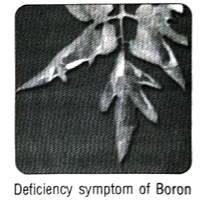
- Iron (Fe): [A] It helps in the formation of chlorophyll and chromatin reticulum. [B] It acts as structural element of electron carriers and helps in ion absorption.
- Copper (Cu): [A] It acts as structural component of some enzymes and helps in reduction of nitrates. [B] It takes part in electron transportation in photosynthesis. [C] It prevents necrosis of leaves in cereals and pulses.
- Molybdenum (Mo): [A] It helps in the fixation and assimilation of nitrogen. [B] It acts as cofactor for enzymes involved in nitrogen fixation. [C] It helps in normal flowering and colouration of leaves. [D] It also helps in protein synthesis.
- Zinc (Zn): [A] It helps in the synthesis of auxins and certain proteins, [B] It activates various enzymes by acting as cofactor. [C] It also maintains normal growth of the stems and roots.
- Manganese (Mn): [A] It acts as enzyme activator. [B] It takes part in chlorophyll and protein synthesis. [C] It helps in the normal growth of shoots and prevents necrosis of leaves.
- Boron (B): [A] It helps in the formation and growth of flowers and leaves. [B] It takes part in protein synthesis. [C] Boron helps in the metabolism of calcium and potassium. [D] It also helps in the elongation of pollen tube.
- Chlorine (CI): [A] Chloride ions, in the cell sap, helps in maintaining the osmotic balance of the cell. [B] It helps in the opening and closing of stomata. [C] It plays a passive role in photosynthesis.
- Nickel (Ni): [A] Nickel is a component of some plant enzymes, most notably urease, which metabolises urea into ammonia. [B] It also acts as a catalyst of enzymes, that help legumes to fix nitrogen.
Short Answer Type Questions
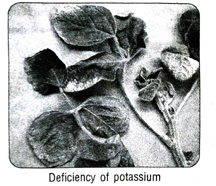
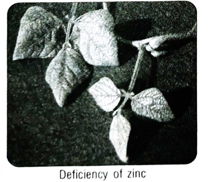
Very Short Answer Type Questions
Multiple Choice Questions & Answers [MCQ]
Answer in a single word or sentence
Fill in the blanks
State True or False
SUB-TOPIC – 1.3
TRANSPIRATION
SUMMARY
- Transpiration is a physiological process by which the excess water drawn by the roots of plants is eliminated in form of water vapour through the aerial parts of plants, especially leaves.
- In both the process of evaporation and transpiration, water is evaporated from the surface to the atmosphere in the form of a water vapour. But both the processes are different from each other. Evaporation is a physical process whereas transpiration is a biological process.
- Stomata are the primary site of transpiration. Though cuticles and lenticels, present on stems, also take part in transpiration.
- Stomata are small openings, present on leaf surfaces, that are bordered with guard cells. Stomata take active part in transpiration and gaseous exchange in plant body.
- Transpiration is affected by several internal and external factors. The external factors are temperature, humidity, wind speed, light intensity etc. and the internal factors are leaf area, structural peculiarities of leaf, stomatal density etc.
- Transpiration provides the plant with evaporative cooling, nutrient flow, carbon dioxide entry and pulling of water from root to tip.
- Though transpiration is an inevitable process, excess rate of transpiration leads to wilting, serious desiccation and shortage of water. Because of this reason, transpiration is called ‘necessary evil.
- Transpiration rate of plants can be measured by a number of devices like lysimeter, porometer, heat balance sap flow guage, etc.
Long Answer Type Questions
- Stomatal transpiration: Stomata are small pores, present mainly on leaves and a few other parts of plants. Each of these pores is surrounded by two guard cells, that help to open and close the stomatal pores subsequently during the day and at night. Maximum amount of excess water (about 90-97%) is eliminated from the plant body through the stomata.
- Cuticular transpiration: Cuticle is a layer of waxy coating present on the epidermis of leaves. Very little amout of water (about 3-10%) is eliminated through the minute pores of the cuticle.
- Lenticular transpiration: Lenticels are permanent, lens-shaped, minute pores, found on the cracked bark of the trees. Negligible amount of water (about 0.1%) is transpired through these pores.

- Intensity of light: The most important external factor which regulates the rate of transpiration is the intensity of light. In nature, stomata open during daytime in the presence of sunlight and close at night. Thus, light controls transpiration by regulating the opening and closing of stomata. Increase in the intensity of light, increases the rate of transpiration and decrease in light intensity decreases the rate of transpiration.
- Temperature: Rate of transpiration increases with the rise in temperature. But when temperature rises above 35°C, the stomata start to close, in order to prevent excess water loss.
- Humidity: Increase in relative humidity decreases the rate of transpiration and vice versa. That means, transpiration is inversely proportional to the relative humidity.
- Flow of wind: In airy environment, transpiration occurs at a faster rate. Therefore, flow of wind is directly proportional to the rate of transpiration.
- Density of carbon dioxide: Rate of transpiration also depends on the density of CO2 in the atmosphere. When density of CO2 increases in atmosphere to a certain extent, as well as, more CO2 accumulates in leaves, stomatal pores close, and rate of transpiration decreases. Similarly, when density of CO2 is less, rate of transpiration increases. Thus, density of CO2 in the atmosphere is inversely proportional to the rate of transpiration.
- Surface area and number of stomata in the leaves: Leaves with larger surface area possess more number of stomata. Therefore, transpiration rate is higher in plants with broader and larger leaves.
- Size of stomata: Size of stomata is directly proportional to the rate of transpiration of a plant.
- Position of stomata: Stomata, present on the surface of leaves, facilitate transpiration, but in some plants, stomata is slightly sunken below the surface of leaves. This type of stomata helps to reduce the rate of transpiration.
- Cuticle: A plant with thick and waxy cuticle reduces cuticular transpiration. On the other hand, a thin and porous cuticle enhances transpiration rate.
- Age of leaves: As the leaves grow older stomata get clogged which lessens the rate of transpiration. So age of leaves is inversely proportional to the rate of transpiration.
- Protoplasm: Increased density of cellular protoplasm results in an increase in the rate of transpiration and vice versa. Thus, density of protoplasm in the cell is directly proportional to the rate of transpiration.
- Presence of hormones: Hormones, such as abscisic acid, control the rate of transpiration by regulating the opening and closing of stomata.
- Ascent of sap: Transpiration results in transpiration pull, by which water and minerals reach the top leaves of the trees.
- Elimination of excess water: By transpiration, excess water from the plant body is removed. It eases the physiological activities within the cells.
- Cooling plant body: By this process, latent heat of evaporation is lost from the plant body, which cools the plant.
- Maintaining water balance: Due to the removal of excess water from plant body, water balance is maintained within it..

- Drying of leaves and twigs: Excess transpiration reduces water content in plant cells. As a result, leaves and other softer parts of plants become dry.
- Wilting: In case of excess transpiration, the cells lose turgidity and shrink. Hence, leaves and tender branches droop. This is called wilting. If the whole plant wilts and remains in that state for several hours, it may die.
- Wastage of energy: Plant utilises only about 5% of the total absorbed water for various functions of its body. The rest (about 95%) is given out by transpiration. Thus, there is a wastage of energy.
- Inhibition of gaseous exchange: Due to excess stomatal transpiration, gaseous exchange during photosynthesis and respiration through stomata, is inhibited.
Short Answer Type Questions
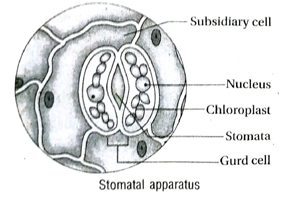
Very Short Answer Type Questions
Multiple Choice Questions & Answers [MCQ]
Answer in a single word or sentence
Fill in the blanks
State True or False
SUB-TOPIC – 1.4
MOVEMENT OF WATER, MINERALS, FOOD AND GASES
SUMMARY
- Movement of substances like water, gases, minerals, hormones, organic solutes, etc. within the plant body, occur not only from one cell to another or from one tissue to another (short distances) but also from roots to top of plants or from leaves to tip of roots (long distances).
- Movement of materials (transport) within plant body, over long distances, through vascular system i.e., xylem and phloem, is called transportation.
- Transport of substances over short distance, occurs via the process of diffusion, cytoplasmic streaming and active transport.
- Water is absorbed by root hairs and it moves through xylem via two pathways-apoplastic and symplastic pathways.
- A hydrostatic pressure, existing in roots pushes the water up through xylem vessels. This pressure is called root pressure.
- The excess water absorbed by plant roots is lost in the atmosphere through leaves by the process of transpiration. It helps in ascent of sap. As a result, it also increases the absorption of mineral nutrients from soil.
- Transpiration driven ascent of sap through xylem depends on physical forces like cohesion, adhesion and surface tension.
- Transpiration creates transpirational pull for absorption and transport of water in plants.
- Active and passive transport helps in ion absorption through plant roots. The active uptake of ions requires ATP energy.
Long Answer Type Questions
- Temperature: With the increase in temperature of the medium, movement of diffusible molecules increase. Therefore, increase in temperature enhances the rate of diffusion.
- Size of diffusible molecules: Larger size of the diffusible molecules restricts their movement. Therefore, larger molecules show slower diffusion rate.
- Extent of concentration gradient: Rate of diffusion also depends upon the concentration gradient of molecules of both media. The greater the difference in concentration, the more rapid the diffusion. The closer the distribution of both molecules gets to equilibrium, the slower the rate of diffusion becomes.
- Solubility: A molecule with higher rate of solubility, diffuses quickly in a given medium.
- Viscosity of the medium: The rate of diffusion is inversely proportional to the viscosity of the medium. That is, if the viscosity of the medium is high, then the rate of diffusion will be lower and vice versa.
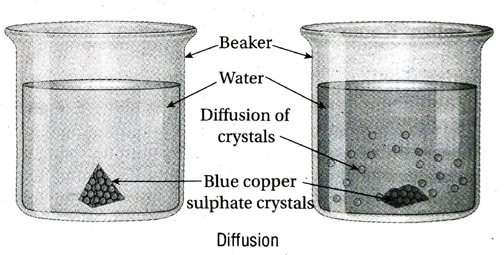

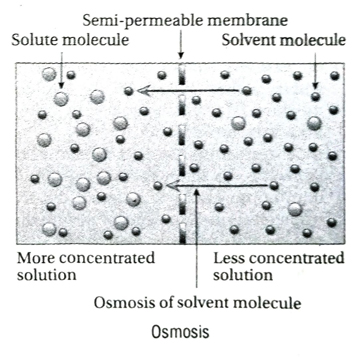

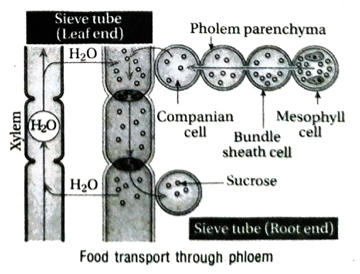
- Transfer of food from mesophyll tissue to sieve tube: In mesophyll tissues, glucose produced by photosynthesis is soon converted into a larger sugar (sucrose). The sucrose solution is then transferred to the sieve tube via bundle sheath cells, phloem parenchyma and companion cells by cell to cell transport.
- Creation of pressure within sieve tube: With the entry of sucrose, the cytoplasm of sieve tube becomes denser. As a result, a concentration gradient develops between the sieve tube & neighboring xylem vessels. Due to this, water moves into the sieve tube from xylem vessels by osmosis, thereby, creating additional pressure within the sieve tubes.
- Flow of food: This mounting pressure produced within the sieve tube, pushes the food solution to different parts of the plant body. Finally, the sucrose solution enters into the tissue cells from the sieve tube.
Short Answer Type Questions
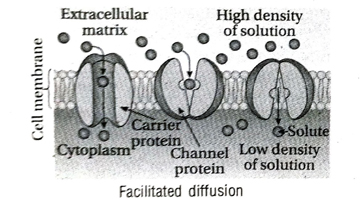
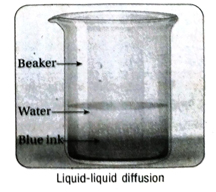
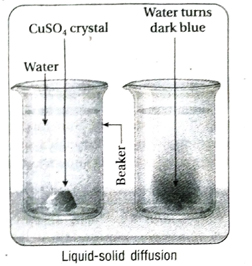
Very Short Answer Type Questions
Multiple Choice Questions & Answers [MCQ]
Answer in a single word or sentence
Fill in the blanks
State True or False
TOPIC – 2
RESPIRATION
SUB-TOPIC – 2.1
ORGAN-LEVEL RESPIRATION
SUMMARY
- The process by which foodstuffs are oxidised in cells to release their energy for utilisation in the body is known as respiration. In respiration O2 is used up and CO2 is released. Respiratory organs are semipermeable, most well-developed gas exchange surface and also presence of profuse network of blood vessels. The chief respiratory sites of plants are stomata, lenticels, pneumathodes and pneumatophores. The different respiratory organs of different animals are seen like body surface, trachea, gill, lungs, etc. Accessory respiratory organ of Koi (Anabas), Magur (Clarias), Singhi (Heteropneustes) are also used where oxygen supply is scanty, so respiration occurs by gills.
- In case of human being respiration is associated with lungs, trachea, bronchi, bronchioles, diaphragm and respiratory muscles.
Long Answer Type Questions
- Moistness: Moist cell membrane of unicellular organisms and moist skin of earthworms, leeches, frogs and toads acts as respiratory organ. Atmospheric oxygen enter into the blood vessels through these moist skin, by diffusion.
- Surface area: A respiratory organ should have a large surface area because surface area improves its efficiency by transporting or exchanging enough oxygen. The thin and numerous lamellae of gills and densely packed alveoli of lungs make these two organs best suited for aquatic and aerial respiration respectively.
- Vascularity: A respiratory organ should be well vascularised. This helps in better exchange of the respiratory gases. Rich distribution of blood capillaries in gills and lungs make these respiratory organs highly efficient for gaseous exchange.
- Stomata: Stomata are the tiny pores, present on the surface of leaves, tender stems and other parts of the plant body that help in the exchange of gases. These are the special intracellular spaces bordered by two specialised bean-shaped parenchyma cells, called guard cells, which open and close. Thus, allowing exchange of gases.
- Lenticels: Lenticels are lens-shaped spaces, formed in the cracks on the bark of trees. These function as pores, providing the pathway for direct exchange of gases between the internal tissues and atmosphere through the bark, which is otherwise impermeable to gases.
- Pneumatophores: Halophytes (mainly mangrove trees) grow on saline muddy soil in the delta region of rivers. This soil has poor oxygen content. To counter it, some roots of these plants grow vertically upward against gravity and come above the soil. These roots are highly porous. These are called pneumatophores or breathing roots, which help in the exchange of gases directly from the air.

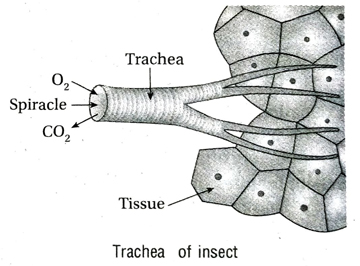
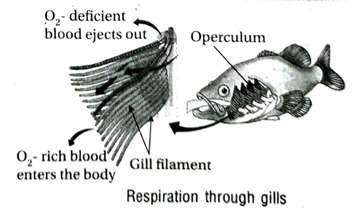
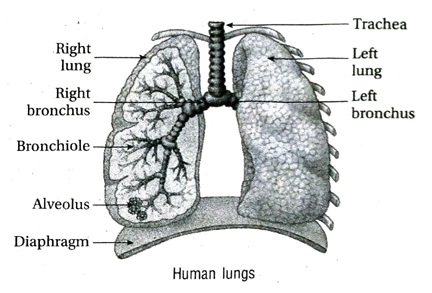
Short Answer Type Questions
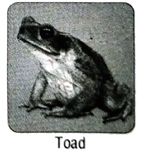
Very Short Answer Type Questions
Multiple Choice Questions & Answers [MCQ]
Answer in a single word or sentence
Fill in the blanks
State True or False
SUB-TOPIC – 2.2
CELLULAR LEVEL RESPIRATION
SUMMARY
- All living organisms require a continuous supply of energy for carrying out various life processes.
- The biochemical process which involves degradation of food in stepwise oxidation with the release of energy inside the living cells is called respiration.
- Cellular respiration is an enzyme regulated biological oxidation of organic substances inside the living cells that releases energy.
- Steps of cellular respiration are glycolysis, krebs cycle and terminal respiration or electron transport system (ETS).
- Cellular respiration are of three types-[1] Aerobic respiration [2] Anaerobic respiration [3] Fermentation.
- Fermentation occure in absence of oxygen and release small amount of energy. Mainly two types of fermentation are there, lactic acid fermentation and alcoholic fermentation. Alcoholic fermentation is a process in which yeast convert sugar into alcohol, whereas lactic acid fermentation only occure in animal cell.
Long Answer Type Questions
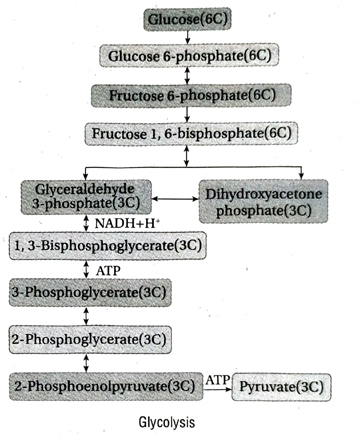
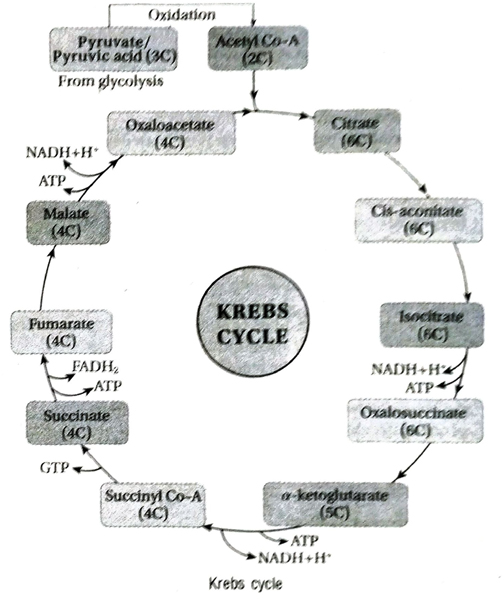
- Conversion of energy and ATP production: The potential energy stored in food, is converted into kinetic energy by respiration. This energy is dissipated as heat and some portion of it is stored in ATP within the cells, as chemical energy for future use.
- Maintenance of O2-CO2 balance: During respiration, atmospheric oxygen is consumed and carbon dioxide is released. Whereas, photosynthesis does the opposite. Thus, photosynthesis and respiration jointly maintain the balance of oxygen and carbon dioxide in the environment.
- Economic importance: Fermentation of flour (starch) by yeast makes cakes and breads puffy. Ethyl alcohol is a fermentation product, which has great economic importance for medicinal purpose and to prepare alcoholic beverages. Cheese, butter, curds are prepared by fermentation of milk. Some vitamins like vitamin B1, vitamin B12, vitamin C, etc. are also produced in the body by bacterial fermentation.
- Excretion: Various excretory products like ammonia, ketone body, alcohol, water vapour, volatile fatty acids, etc., are given out of the body through respiration.
- Maintenance of Acid-Base balance: Since CO2 is liberated during respiration, it helps to maintain acid-base balance in the body.
- Regulation of temperature: When animals exhale, certain amount of heat is liberated from their bodies, thus regulating the temperature of the body.
- Light generation: Certain deep-sea animals, like Ctenophorans and insects, like fireflies can generate light. This phenomenon is called bioluminescence. This light is generated from the chemical energy, gained by respiration.
- Electrical power generation: Some fishes like Torpedo and electric eel can generate huge electrical power within their electric organs to kill preys. Respiration produces this power from chemical energy.
Short Answer Type Questions

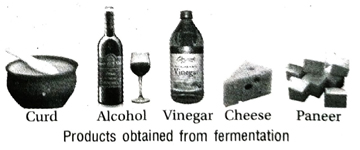
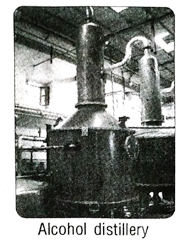
Very Short Answer Type Questions
Multiple Choice Questions & Answers [MCQ]
Answer in a single word or sentence
Fill in the blanks
State True or False
TOPIC – 3
NUTRITION
SUMMARY
- Nutrition is a combination of processes, by which living organisms obtain the substances necessary for growth, developing resistance against diseases and acquiring potential energy for life by intake of food, digestion, absorption, assimilation and egestion (in animals) or by synthesis and assimilation (in plants).
- The two important modes of nutrition include. (i) Autotrophic nutrition and (ii) Heterotrophic nutrition.
- In Autotrophic nutrition, the plants and other photosynthetic organisms prepare their own food with the help of sunlight, water and carbon dioxide.
- The animals cannot prepare their own food. Therefore they have to rely on other animals or plants for nutrition. This is known as heterotrophic nutrition.
- The different modes of heterotrophic nutrition include: Parasitic, Saprophytic, Symbiosis, Holozoic, etc.
- Holozoic nutrition is the mode of heterotrophic nutrition that involves ingestion, digestion, absorption, assimilation and egestion of food material. Example-Human, animals and insectivorous plants.
- In some cases, two different plants live in close association and are mutually benefited by that association. This mode of nutrition is called symbiotic nutrition.
- Saprophytic type of nutrition depends on non-living substances. Food and decaying organic material are absorbed through bodywall of the organism. Example-Bactería, Fungi.
- Parasitic mode of nutrition depends on another living organism (Host). It has close association with the host and obtains food form it. Host is not benefited but harmed. Example-Bacteria, fungi, plants like Cuscuta and animal like tapeworm.
- The human digestive system or alimentary system is mainly made up of three parts-(i) alimentary canal, (ii) accessory organs, (iii) digestive glands
- Alimentary canal consists of mouth, vestibule, oral cavity, pharynx, oesophagus, stomach, small intestine and large intestine.
Long Answer Type Questions
- Autotrophic nutrition: In this process, plants perform nutrition by synthesising their own food from simple inorganic matters by photosynthesis followed by assimilation of the simple sugars produced in this process.
Example-All green plants, certain blue-green algae or cyanobacteria, protists like Euglena, Chrysamoeba and photosynthetic bacteria like Rhodopseudomonas, Rhodospirillum etc.
- Heterotrophic nutrition: The plants which cannot carry out photosynthesis due to the lack of photosynthetic pigments. and depend on other living or dead or decaying organic matter for food, are called heterotrophs. Their mode of nutrition is called heterotrophic nutrition. Different types of heterotropic nutritions are discussed below.
- Parasitic nutrition: In this process, some plants grow on other plants (called hosts) and draw nutrition from them.
Example-Plants like Cuscuta, Rafflesia, etc. show parasitic nutrition.
-
Saprophytic nutrition: In this process, some plants draw nutrition from dead organisms and decaying organic matters.
Example-All types of fungi, like Agaricus, Mucor, Penicillium etc. perform saprophytic nutrition. - Symbiotic nutrition: In some cases, two different plants live in close association and are mutually benefited by that association. This mode of nutrition is called symbiotic nutrition.
Example-Lichen is a symbiotic association of algae and fungi. Here, the fungal part provides the settling platform and water to the algal part. In return, the algae synthesise and supply food.
- Insectivory: Certain plants draw nitrogenous nutrients from small insects. These plants have special organs, typically modified for trapping insects. This mode of nutrition is called insectivory.
Example-Pitcher plant, sundew, bladderwort are some plants which show insectivory.
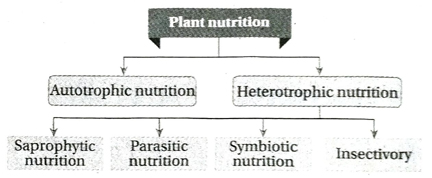
- Parasitic nutrition: In this process, some plants grow on other plants (called hosts) and draw nutrition from them.
- Ingestion: In this step, food materials are taken into the mouth, chewed by teeth and are pushed into the food pipe or oesophagus. Besides teeth, tongue also helps in this process. Salivary secretion makes the food bolus softer to facilitate this process.
- Digestion: This step involves mouth, stomach, liver, pancreas and small intestine. Several enzymes are secreted inside these organs from the glandular cells. In the presence of water, these enzymes act upon respective food materials and help in the breakdown of the matters into simple and absorbable forms. This step is known as hydrolysis or digestion of food.
- Absorption: Mainly small intestine is involved in this process. Stomach and large intestine also play some role in it. End products of digestion are taken into the blood capillaries, where they are absorbed.
- Assimilation: All tissues of the body are involved in this process. In this penultimate phase of holozoic nutrition, various nutritionally important compounds and ions, absorbed in the blood from GI tract, enter into cells and become a part of the protoplasm.
- Egestion: This process involves the rectum and anus of large intestine. In this last phase, undigested food matters are temporarily stored and then discharged as faeces.
- Mouth: It is the opening of the alimentary canal, guarded by a pair of lips. The inner chamber is known as the buccal cavity, which consists of a muscular tongue at the base. The cavity also consists of an upper and a lower jaw, fitted with a maximum of 32 teeth (16 on each jaw).
- Pharynx: It is slightly swollen, muscular chamber behind the buccal cavity.
- Oesophagus: It is a straight, vertical, muscular tube, that carries food from the pharynx to the stomach.
- Stomach: It is J-shaped muscular sac, present on the left side of the upper abdominal cavity. It consists of four regions-the cardiac stomach (upper portion, close to the heart), fundic stomach (wide middle portion), the body (portion between fundic stomach and pyloric stomach) and pyloric stomach (lower portion, attached to duodenum).
- Small intestine: It is a very long, narrow and highly convoluted tube, that extends from the stomach to the large intestine and occupies maximum portion of the abdominal cavity. It has three portions-duodenum (emerging from stomach), jejunum (the middle region) and ileum (meets the large intestine).
- Large intestine: This tube is less coiled and broader than small intestine. It consists of three partscaecum (the dilated portion, where small intestine meets), colon (the tubular part consisting of four regions-ascending colon, transverse colon, descending colon and sigmoid colon), rectum (a wide tube, next to the sigmoid colon, that proceeds downward and opens through the anus).

- Mastication or chewing: Food matters taken into the buccal cavity undergo mechanical processing. Different types of teeth help to cut, tear and masticate the food matters into small particles. Saliva moistens it to form a soft and smooth dough-like matter. This whole process is known as mastication or chewing of food.
- Swallowing: The process by which the food passes from the mouth to the pharynx and then enters the oesophagus by shutting the epiglottis, is known as swallowing or deglutition.
- Movements of the GI tract: Movements of the gastro-intestinal tract occur which help in the forward movement of food. Generally two types of movements are seen-peristalsis and segmentation movement.
- Digestion in the buccal cavity: Since no proteolytic enzyme is present in the buccal cavity, protein digestion does not occur here.
- Digestion in the stomach: This is the site where protein digestion starts. Upon entering the stomach, the food is converted into chyle after it gets mixed with the gastric juice secreted from the gastric glands of the stomach. Presence of HCl in the gastric juice, makes the chyle acidic and activates the proteolytic enzyme pepsin. Pepsin converts proteins into peptones. However, pepsin is unable to execute the complete digestion of proteins into peptones and therefore, incomplete digestion of proteins occur in the stomach.
- Digestion in the small intestine: Upon entering the small intestine, the undigested proteins and peptones mix with the pancreatic and the enteric juices. Proteolytic enzymes, named trypsin and chymotrypsin present the pancreatic juice hydrolyse peptones and undigested proteins into small peptides. After that, these small peptides are broken down into amino acids by the action another enzyme, called erepsin, which is present in the enteric juice. These amino acids are then absorbed into the blood with the help of villi present in the small intestine.

- Digestion in the buccal cavity: Carbohydrates specially boiled starch’ present in the food, mix with Ptyaline present in the salivary juice and is converted to maltose and isomaltose. Maltase present in saliva converts maltose into 2 molecules of glucose. The quantity of maltase in the saliva is very low and therefore, small amounts of glucose is formed in the buccal cavity by the action of the salivary enzymes.
- Digestion in the stomach: Digestion of carbohydrates does not occur in the stomach due to absence of amylolytic or carbohydrate digesting enzymes. Only a small amount of sucrose is hydrolysed into glucose and fructose with the help of HCl.
- Digestion in the small intestine: In the small intestine, both boiled and unboiled starch get converted into maltose by the action of pancreatic amylase. Maltase present in enteric juice then breaks down maltose into 2 molecules of glucose. Majority of the ingested starch is broken down by pancreatic amylase. But if any portion of the starch is still left unbroken, then intestinal amylase will act on it to break it down into simpler components. Moreover, intestinal lactase and sucrase hydrolyse lactose into glucose and galactose and sucrose into glucose and fructose respectively. In this way, complex carbohydrates are broken down into simple monosaccharide units which are then absorbed in the body.
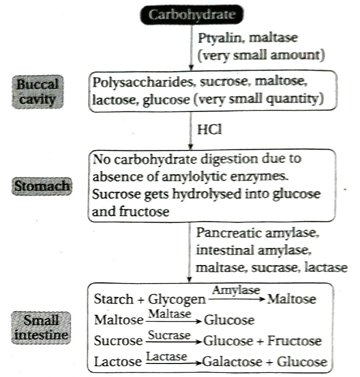
Short Answer Type Questions
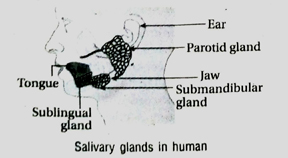

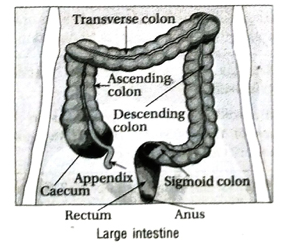

Very Short Answer Type Questions
Multiple Choice Questions & Answers [MCQ]
Answer in a single word or sentence
Fill in the blanks
State True or False
TOPIC – 4
CIRCULATION
SUMMARY
- The circulatory system constitutes the transportation of nutrients, excretory products, metabolites, hormones, water etc., to and from the tissues and organs all over the body.
- Human circulatory system is made up of heart, blood vessels and blood. The blood vessels are of three types-arteries, veins and capillaries.
- Heart contracts and relaxes rhythmically and pumps blood.
- Circulatory system are of two types-(i) Open circulatory system (ii) Closed circulatory system.
- In open circulatory system, the blood is not confined to blood vessels and flows freely in the body cavity and channels known as lacunae and sinuses in the tissues. In closed circulatory system, the blood flows through blood vessels only.
- Body fluids are of two types—(i) Extracellular (Blood, lymph, etc) (ii) Intracellular.
- Blood is comprised of plasma and blood corpuscles.
- Landsteiner discovered the four blood groups—A, B, AB and O. There is another system of blood grouping based on Rh factor.
- The process by which blood is coagulated in the haemorrhage site, is called blood coagulation.
Long Answer Type Questions
- Movement of nutrients and minerals: Water, essential minerals, food materials are transported to all tissues of a living body by means of circulation.
- Transport of respiratory gases: Respiratory gases, such as O2 and CO2, are transported within the body through the process of circulation.
- Removal of metabolic wastes: The unwanted matters, produced in the cells from metabolic activities are transported from the tissues to excretory organs for elimination.
- Movement of synthesised materials: Hormones, synthesised in cells, are transported to their target organs by means of circulation.
- Maintenance of heat: Circulatory fluid maintains the body heat in warm-blooded animals. 6 Storage: Amino acids are stored in the circulatory fluid (blood) to form an amino acid pool. Some lipids (cholesterol) are also stored in the blood.
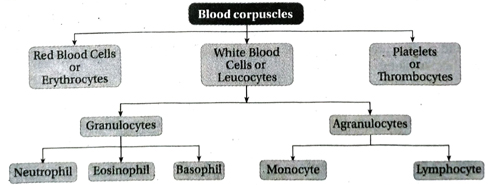
- Transportation of O2, CO2 and nutrients: Blood carries O2 and nutrients to different tissues and carries CO2 to lungs.
- Removal of the metabolic wastes: Blood collect excretory matters from the tissues and carries those materials to respective excretory organs.
- Movement of hormones from glands to target organs: Hormones, secreted from the endocrine glands are transported to the tissues or other glands by blood.
- Maintenance of body temperature: Blood carries glucose to all the tissues, which generate heat by oxidation to maintain the body temperature.
- Resistance against infections: Neutrophils and monocytes kill germs by phagocytosis. Lymphocytes produce antibody. Thus, blood resists infection.
- Preventing blood loss: Excessive loss of blood from wounds is restricted by its coagulating ability.
- Diastole of auricles: In this phase the auricles expand and auriculoventricular valves close. Pressure decreases in the auricles. Soon deoxygenated blood from superior and inferior vena cava and coronary sinus enters into right auricle. At the same time oxygenated blood from pulmonary veins enters into left auricle.
- Systole of auricles: As the auricles get completely filled, they contract. Pressure increases in the auricle. With this pressure, both tricuspid and bicuspid valves open towards right and left ventricles respectively.
- Diastole of ventricles: Diastole of ventricles starts with the systole of auricles. With the opening of tricuspid and bicuspid valves deoxygenated blood enters into right ventricle and oxygenated blood rushes into left ventricle respectively.
- Systole of ventricles: When the two ventricles get filled with blood, ventricular systole starts. So pressure increases inside these chambers. With this pressure tricuspid and bicuspid valves close with a jerk. With maximum ventricular pressure the pulmonary and aortic valves open at a time. Then deoxygenated blood from right ventricle and oxygenated blood from left ventricle are pumped out through pulmonary trunk and aorta respectively.
In human heart, blood flows through two separate circuits. The right portion of it carries deoxygenated blood and oxygenated blood flows through the left portion. In a normal human heart, mixing of two different types of blood never happens. Therefore, human heart acts as a perfectly double circuit heart.
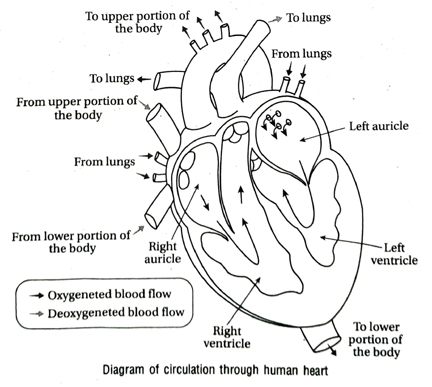

Short Answer Type Questions
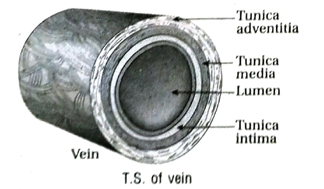
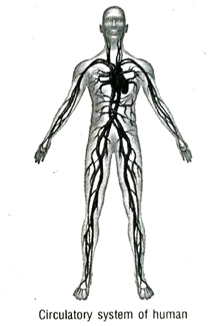
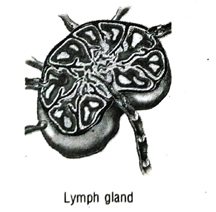
Very Short Answer Type Questions
Multiple Choice Questions & Answers [MCQ]
Answer in a single word or sentence
Fill in the blanks
State True or False
TOPIC – 5
EXCRETION
SUMMARY
- Excretion is the physiological process of separation and removal of water soluble waste products produced due to cellular metabolism and the organs responsible for producing, collecting and removing metabolic wastes from the body are called excretory products.
- Removal of metabolic wastes takes place either by eliminating them from the body or by storing them in the form of suspension and crystals (in case of plants).
- There is no excretory organs or system in plants. Excretory products of plants are not so harmful and more simple than animals.
- Mechanism of excretion in plants are-shedding of leaves (hog palm, silk cotton) shedding of barks (guava,arjun), shedding of fruits (lemon, apple, tamarind), etc.
- Other organisms have different types of excretory organs to eliminate waste materials from their body. Such as contractile vacuoles (Amoeba,Euglena), flame cells (flatworms), nephridia (earthworm, leech), malphigian tubule (insects), kidney (vertebrates).
- The human excretory system consists of a pair of kidneys, a pair of ureters, one urinary bladder and one urethra.
- Nephron is the structural and functional unit of kidney. It has two parts-Malpighian corpuscles and renal tubule. Malpighian corpuscles consists of glomerulus and Bowman’s capsule. Renal tubule has three parts–proximal convoluted tubule, loop of Henle and distal convoluted tubule.
- Urea is the main excretory material of our body which is eliminated through urine.Ammonia is converted into urea in liver.
- Nephrons play a very important role in the process of urine formation.The different steps of urine formation, i.e. ultrafiltration, selective reabsorption and tubular secretion, take place within the different parts of the nephron.
- The accessory excretory organs in human are skin, lungs, liver etc.
Long Answer Type Questions
- Maintenance of fit and healthy life: Excretion removes all toxic and harmful matters produced in the cells by various metabolic activities.
- Maintenance of water balance: Excretion removes excess water from the cells to maintain water balance in the body.
- Recycling of matters: By excretion, many elements, present in the waste materials, are disposed in nature. These are made available for reuse by action of decomposers.
- Economic importance: Many plant excretory products, especially alkaloids, have certain medicinal importance. Gums, resins, tannins, latex etc. are used for industrial purposes. Some nitrogen-rich animal excretory products are used as fertilisers.
- Shedding of leaves: Trees, such as hog palm, Albizia, silk cotton etc. store excretory substances in leaves. These trees shed leaves once a year to dispose those excretory substances.

- Exfoliation of barks: Some trees, such as guava, arjun etc. deposit waste matters in their bark. These plants naturally peel off their bark to eliminate those waste matters from time to time.
- Shedding of fruits: Plants like lemon, apple, tamarind etc. store excretory matters, like different organic acids (e.g. citric acid, tartaric acid, malic acid, etc.) or essential oils in their fruits. These are removed from these plants by shedding of fruits.
- Shedding of flowers: In some plants, excretory products are stored in their flowers. These products are excreted when different parts of the flowers are shedded off. Example-Clove flower.
- Alkaloids: Sometimes alkaloids are stored in the stems and leaves of some plants like banyan, Calotropis etc. In alkaloids different types of excretory products remain solubilised. In case of injury, these alkaloids are released outside and in this way other soluble excretory products are also released.
- Resin secretion: In the resin ducts of stem and leaves of some plants, like pine, a complex insoluble excretory product called resin is present.
- Gum excretion: In some plants such as babul, soluble wastes are excreted in the form of gum.
- Excretion of water: Potato, tomato etc. solubilise different excretory products in water and then excrete them with the help of hydathodes.
- Kidneys: The kidneys are brown coloured, bean-shaped structures, positioned at either side of vertebral column, just below the ribs. The concave face of the kidney is called the pelvis. The section of kidney shows two distinct regions-outer cortex and inner medulla. A renal artery enters and a renal vein leaves each kidney through the pelvis. Numerous fine tubular structures, called nephrons, are present in kidneys, which filters blood from the specially designed renal capillaries.
- Ureter: Ureters are two in number. Each ureter is a 35 cm long, slightly curved tube, emerging from the renal pelvis. Ureters are usually 2-4 mm in diameter. The ureters connect kidneys to the urinary bladder, present at the lower portion of the abdominal cavity.
- Urinary bladder and urethra: Urinary bladder is a muscular sac, located at the front lower portion of the abdominal cavity. Urethra is a muscular tube that descends from the floor of the bladder. The base of urethra is equipped with sphincter muscles, which help to hold the urine inside urinary bladder. Urine enters the urinary bladder via the ureters and leaves via urethra. The capacity of a typical human bladder is 300-500 ml.

- Malpighian corpuscles: It is situated at the free and blind end of a nephron. This portion is composed of Bowman’s capsule and glomerulus. The free and blind end of nephron forms a cup-shaped doublewalled structure, called the Bowman’s capsule. A fine branch of renal artery enters into the Bowman’s capsule as afferent arteriole. It ramifies to form a capillary network inside the capsule, where these capillaries reunite and return as efferent arteriole. It is comparatively narrower than the afferent arteriole. This capillary network is called glomerulus.
- Renal tubule: It is a convoluted tubule, extending from the base of the Bowman’s capsule and ending in the collecting tubule. Renal tubule has three partsproximal convoluted tubule, which starts from the base of the Bowman’s capsule; loop of Henlewhich is a ‘U’-shaped loop-like structure, and distal convoluted tubule, which ultimately meets comparatively wider collecting tubule. Several collecting ducts finally unite to form thicker ductscalled the duct of Bellini.

- Glomerular ultrafiltration: Due to increased blood pressure in the glomerular capillaries, water from blood plasma enters into Bowman’s capsule. This water carries different excretory materials like urea, uric acid, etc. and many essential substances like glucose, amino acids, smaller protein molecules, salts, ions, vitamins, etc. This process is known as glomerular ultrafiltration and the dilute fluid, collected in the Bowman’s capsule, is called glomerular filtrate.
- Reabsorption: Glucose and different ions (K+, Na+ etc.) are reabsorbed in cells of renal tubule from the glomerular filtrate by active transport. Cells of proximal convoluted tubules reabsorb the small protein molecules by phagocytosis. Ions like phosphates, bicarbonates, chlorine, etc., vitamín C, amino acids and many other substances are reabsorbed by renal tubule. All these reabsorbed essential materials then return to the blood.
- Secretion: Creatine, creatinine, hippuric acid, etc. are some excretory materials, which are secreted from the renal tubule.
- Passive absorption of water: Excess water from the glomerular filtrate is reabsorbed by passive transport in the loop of Henle and distal convoluted tubule. Reabsorption of water is controlled by a posterior pituitary hormone, named Antidiuretic Hormone (ADH). After these four steps, normal concentrated urine is formed in nephron, which is received by the collecting tubule and finally reach the duct of Bellini.
Short Answer Type Questions

Very Short Answer Type Questions
Multiple Choice Questions & Answers [MCQ]
Answer in a single word or sentence
Fill in the blanks
State True or False
Follow on Facebook page – Click Here
Google News join in – Click Here
Read More Asia News – Click Here
Read More Sports News – Click Here
Read More Crypto News – Click Here